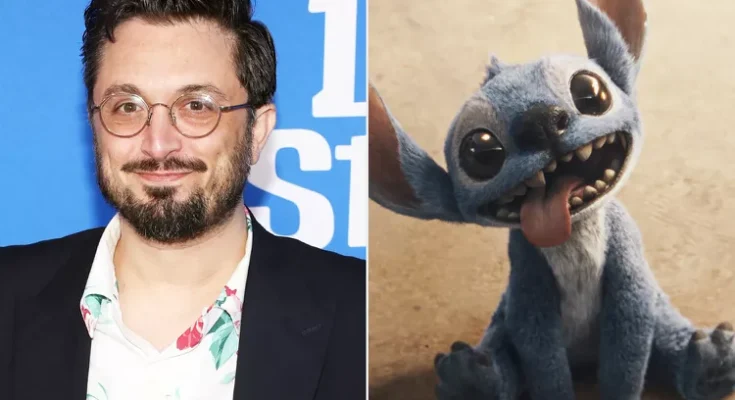“We didn’t want to just restage the beats of the original film, as much as we both loved it,” Dean Fleischer Camp said in a new interview
- Lilo & Stitch director Dean Fleischer Camp defended the new live-action movie’s ending amid backlash
- The film’s third act departs from the original in a key way, and not all viewers were happy with the major change
- “We didn’t want to just restage the beats of the original film, as much as we both loved it,” the director told Variety
The following includes spoilers for the live-action remake of Disney’s Lilo & Stitch.
The director of the new live-action Lilo & Stitch is defending his decision to change the ending of the remake.
Dean Fleischer Camp, 41, undertook the mammoth task of adapting the beloved 2002 Disney animated film to work with real actors, and in doing so he and his team decided to change the story’s third act in a major way.
In the animated version, once all the action and adventure is over, Stitch — a lovable alien — ends up living with Lilo, an orphaned Hawaiian girl, and her older sister and legal guardian, Nani.
In the new version, Nani ends up leaving her younger sister with a beloved neighbor in order to pursue a college degree in the mainland U.S.
A number of people criticized the new ending, with some arguing that Nani leaving for the mainland ruined the original film’s anti-colonial message and undermined the Hawaiian spirit of family and togetherness.
Camp addressed the criticism in an interview with Variety published on June 7, saying, “I’ve had some time to think about this.”
“I do think that a fair amount of the people who are dunking on that premise have not actually seen the movie, and they write me stuff that is clearly wrong,” Camp told the outlet. “They get the beats of the story wrong. But when you see [it], it doesn’t feel that way at all, and you see the intent of the actual filmmaking.”
:max_bytes(150000):strip_icc():focal(811x507:813x509):format(webp)/Lilo-and-Stitch-052025-09-5ab6ef92a9994587a2088da79139110e.jpg)
The Marcel the Shell director went on to say that there were “two larger conversations going on” that led the creative team toward the new ending.
“We wanted to expand the meaning of ohana [a Hawaiian word for family and community], and ground it in traditional Hawaiian values of collectivism, extended family and community,” he continued.
“Chris [Sanders, a co-creator of the original film and collaborator on the new one], who’s Hawaiian, made a really important observation about the original early on in our discussions. He didn’t buy that the two orphan sisters would just be left to fend for themselves,” Camp told Variety. “He said, ‘Neighbors, church groups, aunties and uncles, all these people would step in. That’s just the Hawaii I know and grew up in. ‘ ”
Camp added: “That led him to create this character of Tutu, and she ultimately takes Lilo in as hanai, which is this culturally specific term and tradition that is a form of informal adoption. It isn’t about blood or paperwork, but love and responsibility for the greater good and for one’s community.”
:max_bytes(150000):strip_icc():focal(749x0:751x2):format(webp)/lilo-and-stitch-060825-c5fb18619b46474f87a28d9697b9eb2f.jpg)
Camp claimed that many Hawaiians who have seen the film recognized what they were trying to achieve and enjoyed it.
“A lot of Hawaiians who’ve seen the film have picked up on that reference to hanai, and they love that. It’s this uniquely Hawaiian answer to the question of who shows up when things fall apart, and that idea of informal adoption. It shows the broader community’s willingness to sacrifice and do whatever it takes for these girls and for their ohana,” Camp said.
Camp also said that he knew there would be some unhappy viewers when the film premiered because “I think you can’t satisfy everyone with these remakes.”
“You are treading on hallowed ground when you make one of these, because these are films people grew up with, and I’m one of them, and I totally understand it,” he added.
Camp concluded by saying that he and the movie’s creative team “didn’t want to just restage the beats of the original film.”
“We wanted to tell a story that’s honest about what it means to lose everything and still find a way forward,” he said. “People do get left behind, like what Nani says, this is, and it’s incumbent upon the community to make sure that they aren’t forgotten.”


